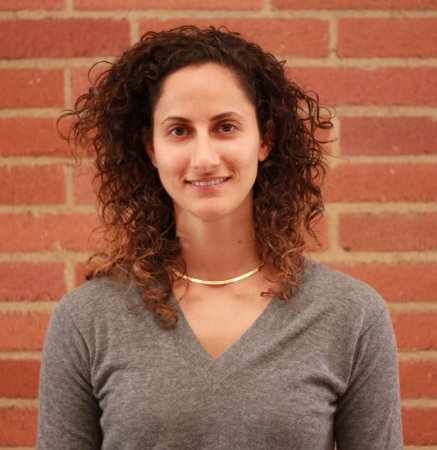Navigating philanthropy: An insider’s perspective
July 6, 2015Starting a blog on the Times of Israel has been on my radar since becoming the Program Director at the Adam and Gila Milstein Family Foundation, where I oversee our organization’s work to strengthen the State of Israel and the Jewish people. Every day, I encounter so much in the world of pro-Israel advocacy — and I often find myself thinking that other activists, donors, and organizations may find the lessons I have learned along the way to be useful. By sharing my experiences with the Milstein Foundation and the nonprofit organizations which we support, I hope to inspire and aid others looking to get involved in our work.
Who am I?
I studied law and economics at Tel Aviv University. As a 3rd year law student I co-founded and managed a nonprofit called Clean Air (“Avir Naki”), aimed at banning smoking from public spaces in Israel (today, no one remembers that, in 2008, people were smoking in the Ramat Aviv mall!) Working with so many dedicated individuals towards a common goal whet my appetite for this kind of work, so I then joined the boards of two other non-profits and while working as a tax attorney at Ernst & Young. I moved to Los Angeles to pursue an MBA at UCLA Anderson School of Business (’14), and as a student I got involved with a number of LA-based nonprofits in the Jewish community before getting elected President of the UCLA Jewish Business Club. I’ve been working with the Milstein Family Foundation since July 2014.
So what have advice do I have for nonprofits?
This is not a comprehensive list, and in many ways, it is a reflection of the Milstein Family Foundation’s approach to philanthropy in the niche world of pro-Israel philanthropy world. Still, this is my ‘wish-list’: the things I wish every grant applicant I spoke with knew. For their sake.
- Philanthropy isn’t so different from startup investing. To attract investors, startups need much more than just a good idea — they need to demonstrate a clear track record of success, and nonprofit organizations are no different. If you are serious about raising seed money, the best strategy is to start small, record how your approach works qualitatively and quantitatively, and then expand gradually.
- We invest in people. Startups and nonprofits are similar in that when you raise money, you don’t just sell your ideas, you sell yourself. The Milstein Foundation donates to a variety of organizations, but they all have one thing in common: they are driven by smart, hard-working people. You may be a nonprofit organization, but you must do your best to make prospective donors feel like investors: show them that they are not giving money away, but laying the foundations for future growth.
- Philanthropists can give more than just money: many want to stay involved to augment their donation’s impact. This is a lesson I have learned directly from the Milsteins, who talk about “active philanthropy” all the time. As you try to raise funds, understand that most philanthropists willing to donate major sums are not interested in throwing you some money and then walking away forever. You need to keep your donors feeling positive and involved.
- Find the synergies. At the Milstein Family Foundation, we are always looking for synergies between our different projects; when one of them needs support, the first thing we do is comb our network of organizations to see if we can find them some help. This is why it’s always a good idea to research your prospective donors. If your work ties into other projects that they fund, you can demonstrate that your organization can enhance their other initiatives, giving them more — as odd as it sounds for a nonprofit — ‘bang for their buck’.
- Private companies attract investors by standing apart from the competition; nonprofits attract donations through collaboration. A little competition can be great because it will pressure your organization to innovate and think outside the box. However, as a rule of thumb, nonprofits work best when they collaborate. Donors don’t want to give money to two or three organizations all doing the exact same thing. Rather than fearing the competition, non-profits should always be looking to build bridges in way that increases their impact. Working together with other organizations will allow you to network with like-minded individuals and lend you some credibility, which can be especially important when you are just starting out. At the Milstein Family Foundation, it’s very rare for us to meet a new organization without also making a few introductions.
- Show, don’t tell. A basic rule in economics is that people respond to incentives. It’s true in business, it’s true in relationships, and it’s just as true in the nonprofit sector. When you pitch your ideas to donors, don’t explain why they should invest in your idea, tell them why they have. Give them a powerful incentive by showing them the tangible consequences of funding (or not funding) your work. If your nonprofit works with animals, bring some puppies to your sales pitch. If you’re designing a clean water project, pour your would-be donors a glass of disgusting, dirty water to show them just how high the stakes really are. Chances are your potential funders encounter new nonprofits all the time — if you want to hear back from them, you need to make a splash.
Final Thoughts
In my next blog post, I plan on writing about some of the projects that the Milstein Family Foundation supports.
The non-profit world is full of exciting opportunities to contribute to the causes you care most about. Have questions? Feel free to reach out to email me at [email protected].
You can learn more about the philanthropic work of Adam Milstein and the Milstein Family Foundation by visiting us at milsteinff.org.
Our Links
Our Mission
The mission of The Adam and Gila Milstein Family Foundation (“MFF”) is to strengthen American values, support the U.S.-Israel alliance, and combat bigotry and hatred in all forms.
MFF also works to strengthen the Jewish people and their affinity to the State of Israel, the homeland of the Jewish people, by instilling pride in their Jewish identity and fostering the courage to stand up and combat their detractors… Read More
Our Latest Articles
 Adam Milstein: Making an impact through strategic venture philanthropy by Alan RosenbaumMay 19, 2022 - 4:11 pm
Adam Milstein: Making an impact through strategic venture philanthropy by Alan RosenbaumMay 19, 2022 - 4:11 pm Combatting antisemitism through strategic venture philanthropy – opinionApril 25, 2022 - 4:10 pm
Combatting antisemitism through strategic venture philanthropy – opinionApril 25, 2022 - 4:10 pm University Diversity, Equity, and Inclusion Staff Show Anti-Israel BiasJanuary 30, 2022 - 10:22 pm
University Diversity, Equity, and Inclusion Staff Show Anti-Israel BiasJanuary 30, 2022 - 10:22 pm



